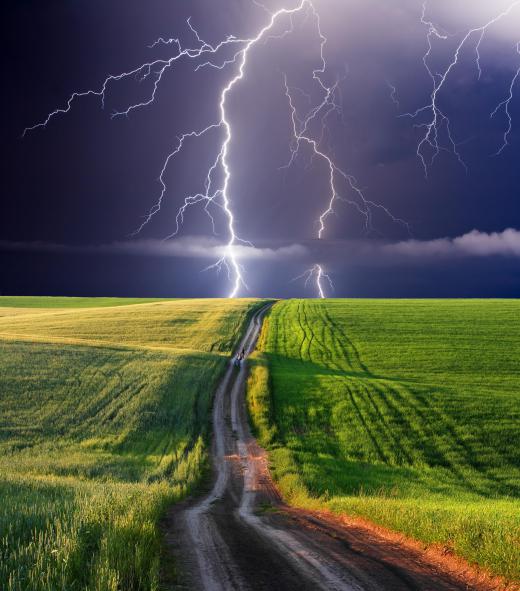What is a Megawatt?
 Mary McMahon
Mary McMahon
A megawatt is a unit of power. This term is often used in the context of discussing either devices which draw a great deal of power, or plants which manufacture power. Megawatts may also come up in the context of discussions about natural phenomena such as lightning. Lightning can potentially discharge power measured in the hundreds of megawatts, which is one reason why alternative power advocates are have toyed with the idea of lightning as a potential electricity source.
Like related terms such as kilowatt and terawatt, the megawatt is based on a unit of power known as a watt. One megawatt equals one million watts. To put this in perspective, a household light bulb is often 100 watts, so a megawatt equals a whole lot of lightbulbs. The term “watt” refers to power which is used instantaneously; when that 100 watt lightbulb is turned on, it draws 100 watts. Were there such as a thing as a one megawatt lightbulb, it would draw one million watts when turned on. (And be extremely bright.)

The megawatt is such a large unit of power that it comes up primarily in discussions about the industrial applications of power. Certain scientific equipment, such as a particle accelerator, may have a power draw which is measured in megawatts. Likewise, large ships such as air craft carriers may require power measured in megawatts, which requires an extremely robust power plant.
Output of power plants may be described in megawatts, with one thousand megawatts being a common goal for a power plant. It is important to be aware that when people talk about the capacity for a power plant's output, that doesn't mean that the plant will output at that capacity continuously. Plants need to be taken offline for maintenance sometimes, and they may also adjust power production to respond to changing demand. Thus, a 1,000 megawatt power plant may only have an average production rate of 750 megawatts.
A rather outdated formula states that a megawatt can power 1,000 homes. Thanks to the changing nature of electricity demand, this is no longer the case in many regions of the world. Heating and cooling systems draw a lot of power, and increasing numbers of homes have their own washers and dryers, electronics, and other appliances which add to the power they draw, driving up demand. Meeting this shifting demand and balancing the industrial need for power is a challenge in many nations.
AS FEATURED ON:
AS FEATURED ON:











Discussion Comments
An easy way to look at this is through lightbulbs. Take an average 100 watt lightbulb, for example. One megawatt could power 10,000 of these! If you somehow had a megawatt lightbulb, the surrounding area would look as if lightning was repeatedly striking in your home.
Post your comments